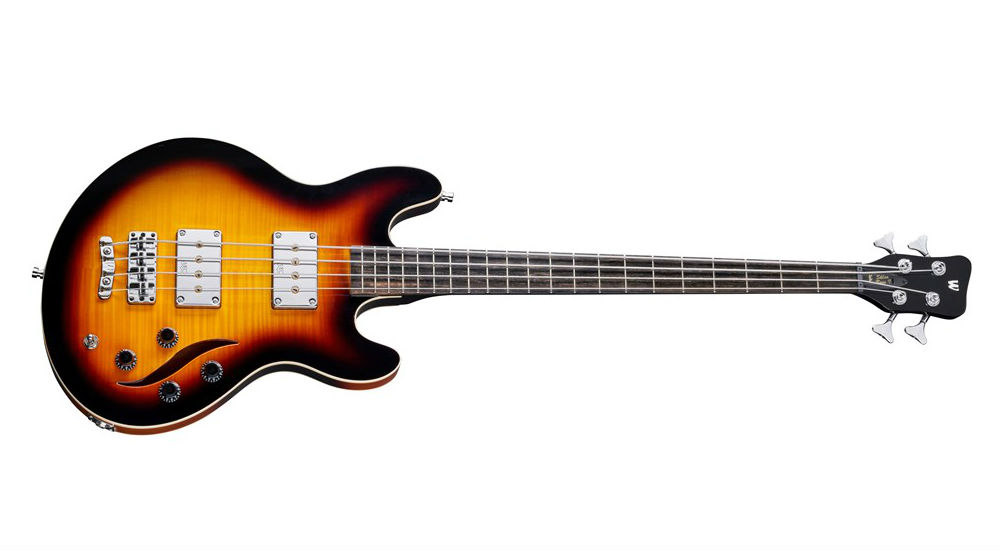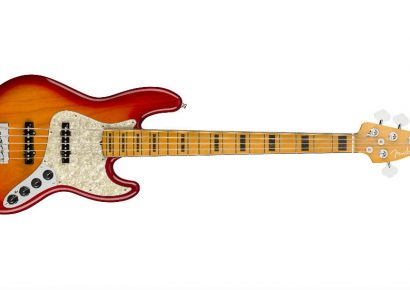At over $10,000, the German-made Warwick Artist Series Sklar Bass clearly may not be within everyone’s price range. While understandably not rocking the same finesse and craft as the Warwick, the RockBass is, however, a superb alternative.
This bass features a beautifully crafted semi-hollow Mahogany body with an AAA flamed maple top, while the set, three piece neck consists of maple. It comes with two passive MEC vintage single coil pickups, as well as active two-way electronics and controls for volume, balance, treble and bass.
Its 34-inch scale and four kilogram weight mean that the RockBass Sklar Bass I is far from cumbersome. Whether you prefer to play sitting down (as Lee Sklar sometimes tends to do himself) or standing up, the RockBass is an all-round comfortable instrument to play. One design-related feature that lacks, however, is the bevel cutaway, featured on the aforementioned and more expensive Artist Series. After a couple of hours of playing, my right forearm did begin to feel the strain from hanging over the edge of the bass body. It would have been nice to see the cutaway – one of the more conspicuous modifications made by Sklar to the antecedent Warwick Star Bass – makes its way onto the RockBass as well.
However, no complaints to be made about the action here. The strings are set at an ideal height, so fret buzz is very minimal. I personally prefer a slightly lower action on my basses, mainly because it makes fast passage work a tad more accessible. It stays in tune rather well, and the intonation is great, albeit a bit tough past the 19th fret mark. This isn’t a huge problem though – as Leland himself says, if you find yourself playing up there too much, your band may need to look for a bassist.
After plugging the RockBass Sklar I through my MarkBass rig, I was immediately captivated by the beautiful, boomy tone the instrument produced with the bass EQ turned up. I’ve played basses where, if you turn the bass EQ up, it can sound muffled and indiscernible. The great thing about the RockBass Sklar I is that the bass tone sounds full without losing any definition. The sustain is impressive, a feature that will definitely suit those who adhere to Sklar’s ‘Less-Is-More’ approach to bass playing.
On the other hand, I can’t say I was as impressed when I turned the treble up; the tone is on the tinny side and ends up sounding a bit like the lower register of an acoustic guitar. There’s also a slight hiss from the pickups that feeds through the amp, which I found a tad distracting. Having said this, I can’t imagine that those who use the RockBass will be heavily reliant on its high-end tone; after all, that’s what the guitarist is for.
It also features, much to my amusement, a “Producer Switch” next to the EQ and volume dials. If you’re ever in the studio and the producer starts banging on about your tone, flick this switch and just keep doing you – unless you’re recording with Rick Rubin, chances are they’ll never know it’s a gimmick.
All in all, the RockBass Sklar Bass I is a terrific instrument for those (quite understandably) reluctant to fork out $10,000 for the premium model. The resonant low end will provide a solid bedrock for any live jam or mix that you’re working on, while the relatively thin neck and low, responsive action make it suitable for faster, more intricate basswork.

